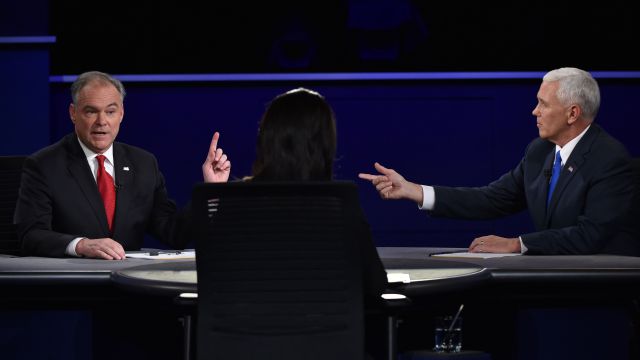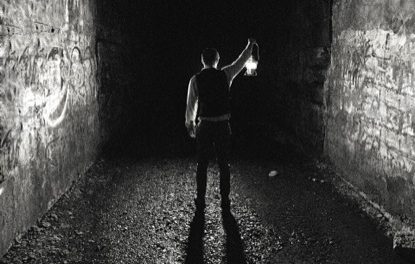I was planning on writing a blog post on an aspect of our intractable political situation, but then today I had such wonderful class sessions with my freshmen, I decided, “Do we really need yet another political blog post?” Instead, let’s talk about our destiny.
Today, we had gotten to the last day of our tour through Scripture: the reading was the last few chapters of the Book of Revelation, along with the wonderful paragraphs (10-15) of Pope Benedict’s encyclical on hope, Spe Salvi, where he describes “eternal life.” The sessions were the kind one dreams about as a teacher: let the students loose on an interesting question, and then just run with them to the crucial points. And the question was: well, what is heaven like? Their small groups generated some interesting answers. Some guys said, “Golden Corral.” Another student, a singer, said, “No, Golden Chorale.” Another likened it to actual performance. Some cat lovers were enamored by the new emerging phenomenon of kitty cafes. The dog lovers, predictably, were not so amused by this.
What was right about all these answers was, by and large, the students assumed that there was some sort of continuity between what they experience now as fulfillment and what is experienced as fulfillment in heaven. But as we all pressed one another on the diverse answers, people got a little bit more nervous. One said, “well, we really have no idea.” I asked, “Really? If we have no idea at all, how can we desire it?” And we explored whether it was possible that in heaven, everyone got fulfillment on their own terms – which the students quickly saw would be antithetical to virtually the entire trip we had taken through the biblical drama. Even so, the idea of continuity is a crucial one: as Benedict memorably states:
So what do we really want? Our paradoxical attitude gives rise to a deeper question: what in fact is “life”? And what does “eternity” really mean? There are moments when it suddenly seems clear to us: yes, this is what true “life” is—this is what it should be like. Besides, what we call “life” in our everyday language is not real “life” at all…. The term “eternal life” is intended to give a name to this known “unknown”. Inevitably it is an inadequate term that creates confusion. “Eternal”, in fact, suggests to us the idea of something interminable, and this frightens us; “life” makes us think of the life that we know and love and do not want to lose, even though very often it brings more toil than satisfaction, so that while on the one hand we desire it, on the other hand we do not want it. To imagine ourselves outside the temporality that imprisons us and in some way to sense that eternity is not an unending succession of days in the calendar, but something more like the supreme moment of satisfaction, in which totality embraces us and we embrace totality—this we can only attempt. It would be like plunging into the ocean of infinite love, a moment in which time—the before and after—no longer exists. We can only attempt to grasp the idea that such a moment is life in the full sense, a plunging ever anew into the vastness of being, in which we are simply overwhelmed with joy.
I love these paragraphs from Benedict not only because he develops this continuity, but also because he (by way of Henri de Lubac) insists on the idea that salvation is ultimately social. It is a matter of being together, a city, in which there is a shared life. This, too, was a crucial theme to our entire tour through the Bible. What God does is gather a people.
The class was so fruitful that I realized I needed to spend far more time on this question next semester. I think this is because, for the most part, students tend to have one of two dominant images of “heaven.” On the one hand, there is a bourgeois image of virtually complete continuity – it really just is happily going on and getting to do everything you like to do now, with everyone you like to be with. Even if there is something to this, this image has difficulty grappling with the evident scenes of judgment in the Bible, or worse, the scenes of judgment simply apply to the “bad people.” On the other hand, a lot of students have a very “churchy” picture, which suffers precisely insofar as it doesn’t make clear what the continuities are. This can lead unfortunately to the formation of “sacristry Christians” Francis warns against. Even Benedict notes delicately:
In the course of their history, Christians have tried to express this “knowing without knowing” by means of figures that can be represented, and they have developed images of “Heaven” which remain far removed from what, after all, can only be known negatively, via unknowing.
When you push a little bit on these images, however, the students quickly realized that there was a need for more nuance.
For moral theology, the key concern is our limited ability to articulate more clearly the connection between our everyday desires and goals, and this ultimate destiny. I often break out the cartoon from the first pages of the Baltimore Catechism, which shows two paths, one to pearly gates with clouds, the other (no gates) to fiery flames on the horizon. The signposts in the cartoon indicate that what you love determines which path you are on. This image, for all its obvious limitations, nevertheless offered a relatively comprehensible connection between the present and the future, your choices now and your ultimate destiny. If this picture is no longer compelling (and there are good reasons why it might not be), the problem is nothing has really come in to replace it. Theologians can say “union with God” or even “friendship with God,” but that is not a picture, or if it is, it veers too close to imagining some kind of dissolution of the human into the divine.
We need better pictures of this connection. And maybe this is actually a politics post after all, because one of the reasons why it might be the case that we divide into a “Christian Left” and a “Christian Right” is because we lack the necessary eschatology to make theological sense of our commitments within temporal politics. Lacking this anchor in our destiny, it is all too easy for our political arguments to mirror competing temporal judgments about various matters. A vertically-individualist eschatology competes with a horizontal-liberationist one, I think. Both have something to say, but both are inadequate. And we have the theological resources to do much better, so that we may understand how our joy here (mixed with genuine sacrificial suffering) may be an effective sign of the time when our shared joy is complete.





